Birds
-
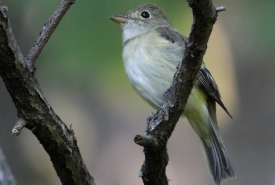
Acadian flycatcher
The Acadian flycatcher is a small songbird. It is part of the flycatcher family and can be easily identified by its "peet-sa" song.
-
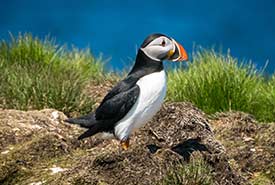
Atlantic puffin
Designated the official bird of Newfoundland and Labrador in 1992, the Atlantic puffin is one of three species of puffin and the only one that lives along the Atlantic Ocean.
-
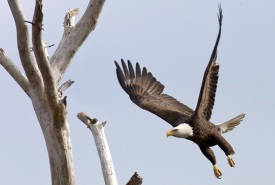
Bald eagle
Majestic in its flight, the bald eagle is an icon of strength and courage, and a beloved symbol in North American culture.
-
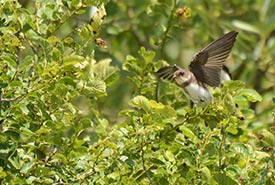
Bank swallow
Bank swallows, the smallest swallow in North America, are aerial insectivores. They feed on flying insects and measure approximately 12 to 14 centimetres in length.
-
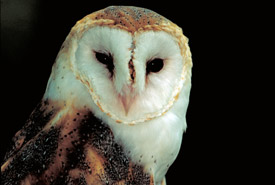
Barn owl
The characteristic pale, heart-shaped face of the barn owl easily distinguishes it from other owls. These medium-sized owls have a wingspan of 100-125 centimetres (39-49 inches) and weigh less than one kilogram (two pounds).
-
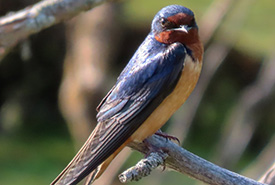
Barn swallow
The barn swallow is one of the world’s most widespread birds, recognized by its tawny (orange-brown colour) belly, blue upperparts and deeply forked tail.
-
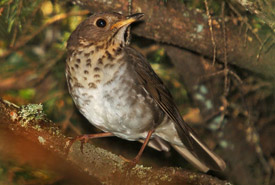
Bicknell's thrush
Bicknell's thrush is the only bird that breeds exclusively in northeastern North America, with up to four males tending to a single nest.
-
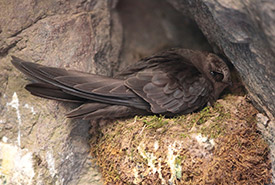
Black swift
Black swift is a high-flying, elusive bird that nests on steep cliffs in BC and Alberta. During breeding season, Canada is home to about 80 per cent of the North American population of this bird species.
-
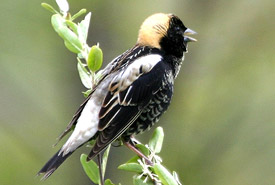
Bobolink
An unmistakable bird on the grasslands, the male bobolink’s plumage resembles a tuxedo worn backwards. The male’s call is a bubbly, tinkling song with sharp notes sung from perches and during aerial displays.
-
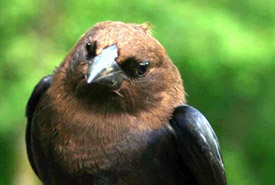
Brown-headed cowbird
The brown-headed cowbird is a blackbird found in nearly all of Canada, near livestock, birdfeeders and forest edges.
-
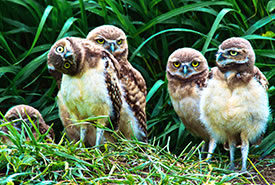
Burrowing owl
Burrowing owls are easily recognized by their long legs, short tail and small size, and can often be found standing on fence posts or on the ground foraging for mice, grasshoppers and other insects.
-
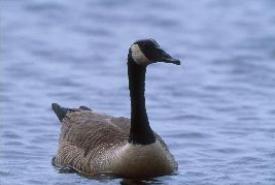
Canada goose
Quite possibly the most familiar bird species to Canadians, Canada geese roam around parks, lakes and wetlands in the spring and summer. But there are many things that you might not know about this iconic bird.
-
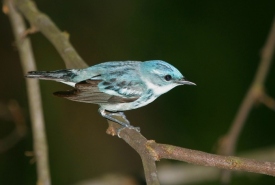
Cerulean warbler
The cerulean warbler is an evasive bird, often heard but rarely seen because it lives in the tops of the tallest trees, flitting from branch to branch as it forages for food.
-
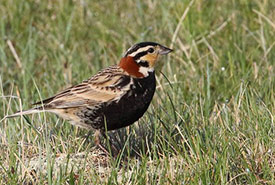
Chestnut-collared longspur
Chestnut-collared longspur is a medium-sized songbird with a stout bill. Longspur refers to the long claw on its hind toe.
-
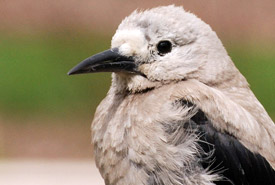
Clark's nutcracker
Through the summer months, Clark's nutcrackers supplement their diet with insects and berries but, come early fall, they start to collect and store their favourite food: the seeds of limber and whitebark pine.
-
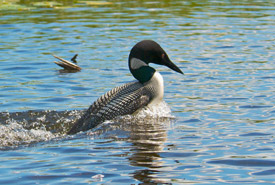
Common loon
Did you know that the loon is the official bird of the province of Ontario? Considered a symbol of wilderness and solitude, the common loon is known for its haunting voice.
-
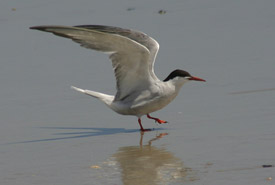
Common tern
A tern is like a small gull, only much more elegant and streamlined. Terns swoop and dive into water to feed on small fish.
-
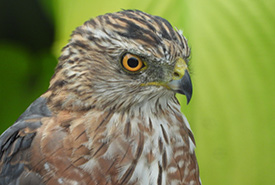
Cooper's hawk
Cooper’s hawk, a species once dwindling in Canada, is now common. You may also recognize Cooper’s hawk by its previous name, chicken-hawk.
-
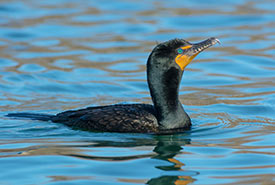
Double-crested cormorant
Double-crested cormorants are similar in size to a small goose, around 80 centimetres tall with a wingspan of 120 centimetres.
-
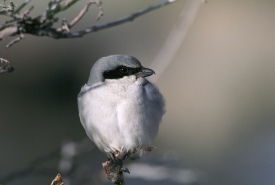
Eastern loggerhead shrike
The loggerhead shrike, one of the fastest-declining bird species in North America, is a unique songbird. Don’t be fooled by its delicate appearance, though; the loggerhead shrike hunts like a bird of prey.
-
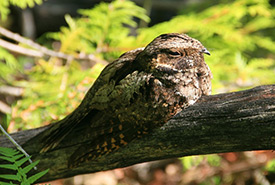
Eastern whip-poor-will
Like most nightjars, eastern whip-poor-will is a nocturnal and well-camouflaged species. It is rarely seen, and often only identified by its distinctive, three-syllabled “WHIP-poor-WEEL” call during the spring and summer.
-
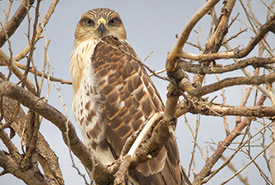
Ferruginous hawk
Ferruginous hawks, among the biggest hawks in North America, are migratory birds with reddish-brown feathers and sharp talons.
-
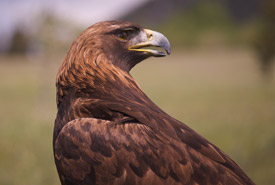
Golden eagle
The golden eagle is one of the biggest and fastest birds of prey in North America, weighing 2.5 to seven kilograms and diving at speeds of over 240 kilometres per hour.
-
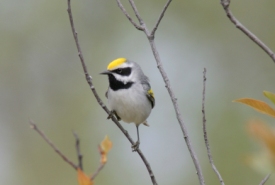
Golden-winged warbler
Measuring only 11 centimetres long, this tiny bird travels all the way from its wintering grounds in Central and South America to spend the warmer months in Quebec, Ontario, Manitoba and Saskatchewan.
-
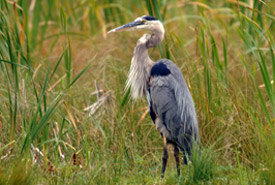
Great blue heron
The great blue heron is the largest heron found in Canada. This colonial-nesting waterbirds is characterized by its long neck, long legs and short tail, and a greyish-blue upper body with black and white markings on its crown and under parts.
-
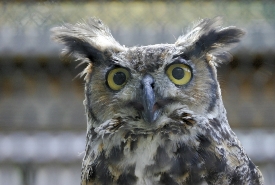
Great horned owl
The great horned owl, the most common owl in the Americas, can be distinguished from other owl species by the lengthy, feathered tufts on its head, called “plumicorns.” It also has a speckled, grey-brown body, reddish-brown face and white patches on its throat.
-
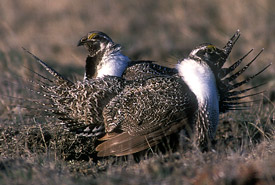
Greater sage-grouse
Learn about a bird whose courtship dance is one of North America’s most incredible wildlife spectacles.
-
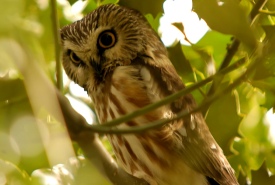
Haida Gwaii saw-whet owl
There are two subspecies of the northern saw-whet owl: the common northern saw-whet owl, found throughout North America, and the threatened Haida Gwaii saw-whet owl, found only on the Queen Charlotte Islands, off the northwest coast of British Columbia.
-
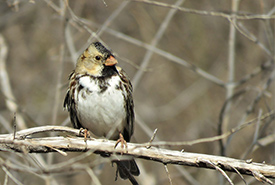
Harris's sparrow
This sparrow, which breeds only in Canada, was named by ornithologist John Audubon in honour of his friend Edward Harris.
-
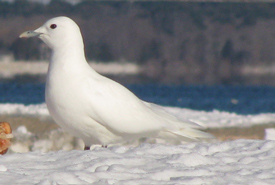
Ivory gull
The ivory gull can be identified by its striking pure-white colour and small size, with a body shape similar to a pigeon.
-
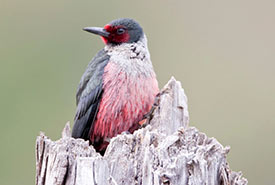
Lewis's woodpecker
Lewis’s woodpecker are not what you'd expect from a typical woodpecker, which excavates wood-boring insects from trees. Instead, this species has adapted for fly-catching.
-
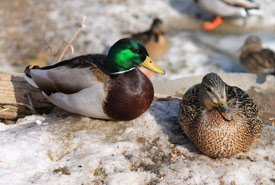
Mallard
One of Canada’s most common ducks, this iconic species is an integral part of habitats across the country.
-
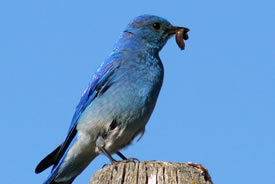
Mountain bluebird
Mountain bluebirds are small members of the thrush family and feature long wings and tails. Males are a striking cerulean to turquoise blue on top with pale blue breasts and white undersides.
-
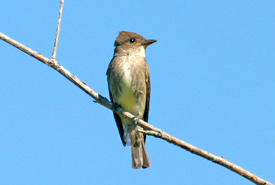
Olive-sided flycatcher
The olive-sided flycatcher is best known for its song, which is a loud, three-note whistle that sounds like “quick, three beers.” They are often seen perched on top of tall coniferous trees or dead snags, where they patiently wait for flying insects (their prey) to fly by.
-
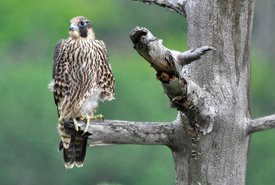
Peregrine falcon
Gaze skyward on a clear day and you might notice a crow-sized, hawk-like silhouette on the edge of a high-rise or cliff. You might be looking at a peregrine falcon.
-
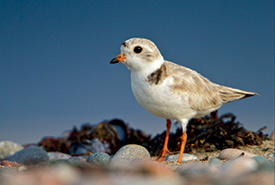
Piping plover
The piping plover is an endangered shorebird that relies on sand and pebble beaches and saline wetlands.
-
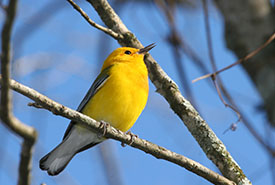
Prothonotary warbler
A dazzling flash of gold darts about in the understory of swampy woodlands. The “zweet zweet” calls can be heard echoing through the trees.
-
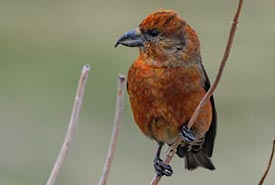
Red crossbill (percna subspecies)
A medium-sized finch, the red crossbill is a seed specialist and relies on conifer forests for cone seeds as a food source.
-

Red-tailed hawk
This fearsome bird of prey is the most prevalent North American hawk. You have probably heard its hair-raising, hoarse screech before, as filmmakers often use a recording of its call when hawks or eagles of any species appear in a movie.
-
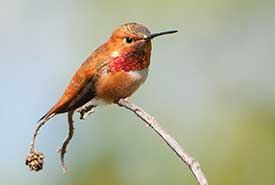
Rufous hummingbird
The rufous hummingbird is known for its beauty and its boldness. It’s an aggressive species by nature, and you will certainly notice its eye-catching, orange plumage as it is battles for the best feeding spot at your hummingbird feeder.
-
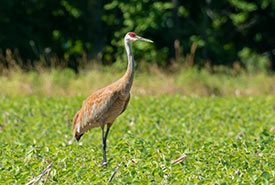
Sandhill crane
The sandhill crane is a large bird that can measure up to 1.2 metres tall and have a wingspan of two metres.
-
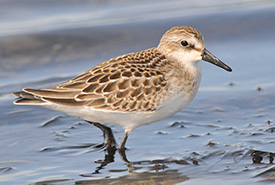
Semipalmated sandpiper
The semipalmated sandpiper is a small shorebird with a short neck, long, black legs and a thin blunt-tipped bill. It is named for the partial webbing between its toes (“palmated” means “webbed”).
-
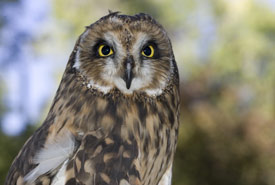
Short-eared owl
Almost anywhere around the world, you may come across a short-eared owl. This medium-sized bird has one of the largest distributions of any bird species. It is found on all continents except Antarctica and Australia.
-
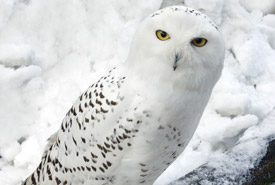
Snowy owl
One of Canada’s most recognizable owls due to its snowy-white plumage, the aptly named snowy owl is an enduring symbol of Canada’s North.
-
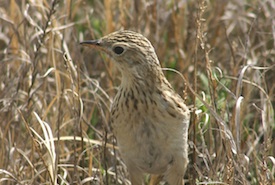
Sprague's pipit
Sprague’s pipit, a type of songbird, is known for having the longest known flight display of any other bird species. Males often display for about half an hour while airborne, and one was even recorded displaying for three hours.
-
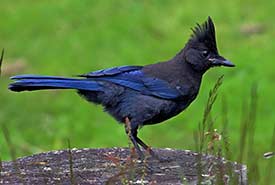
Steller's jay (carlottae subspecies)
Steller’s jay is the provincial bird of British Columbia. It is named after Georg Steller, a Russian naturalist who first described it in 1741, near Cordova, Alaska.
-
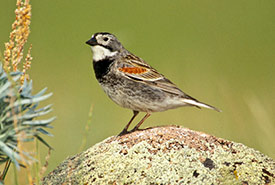
Thick-billed longspur
An uncommon sight but a truly rewarding one if you are lucky to catch a glimpse, the thick-billed longspur puts on an aerial courtship display that rivals the best of human acrobats.
-
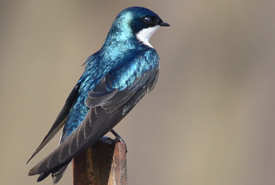
Tree swallow
The tree swallow is an eye-catching bird with a shimmering blue back and pure white front. Its flight feathers are black and it has a narrow, black eye mask.
-
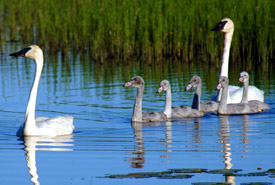
Trumpeter swan
The statuesque trumpeter swan stands between 60 to 72 inches tall and has a distinguishing bugling, low-pitched voice, hence its name.
-
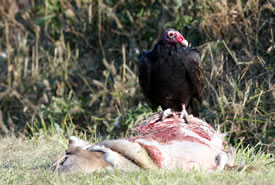
Turkey vulture
Adult turkey vultures are very large birds with long, broad wings, mostly dark brown feathers and sharply hooked white bills.
-
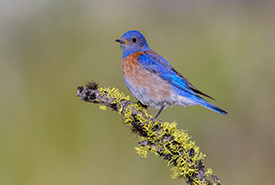
Western bluebird (coastal population)
Known as the harbinger of spring, the western bluebird’s subtle song can be heard as the weather warms and wildflowers start blooming in the Pacific Northwest.
-
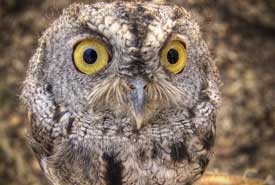
Western screech-owl
Western screech-owls have relatively large, yellow eyes and what look like pointy ears on the top of their heads.
-
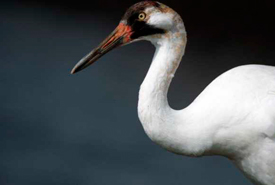
Whooping crane
Whooping cranes are birds of large stature — their long neck, slender body and long legs put them at about 1.5 metres tall, and, in flight, their wingspan can measure more than 2 metres.
-
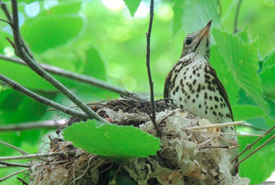
Wood thrush
The wood thrush is a medium-sized songbird, whose beautiful "eee-o-lay" call rings out through the deciduous forests of southeastern Canada.
-
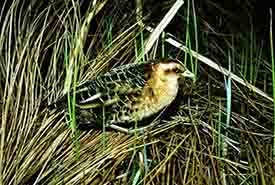
Yellow rail
A small bird rarely seen but sometimes heard at night, yellow rail lives deep in marshy areas.





